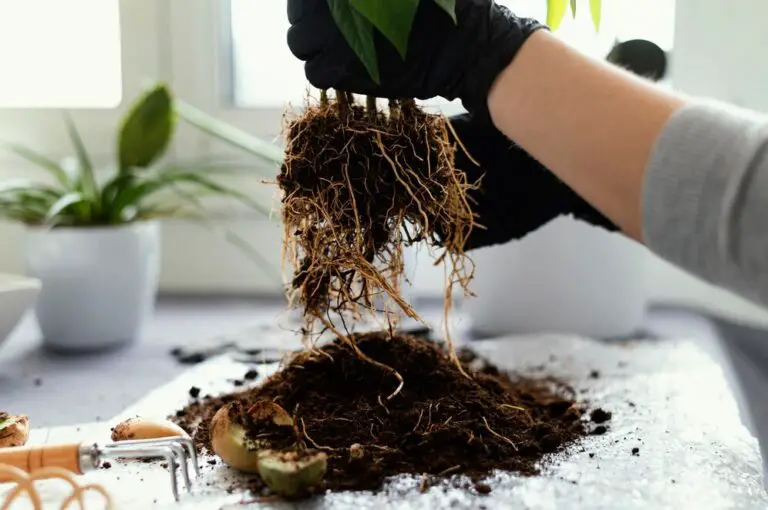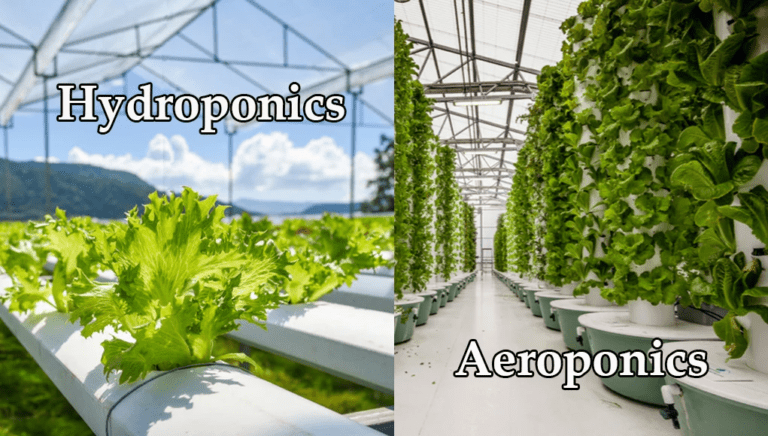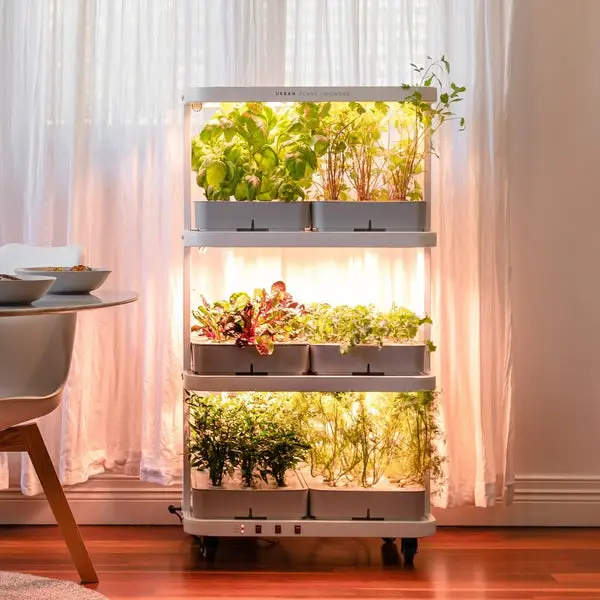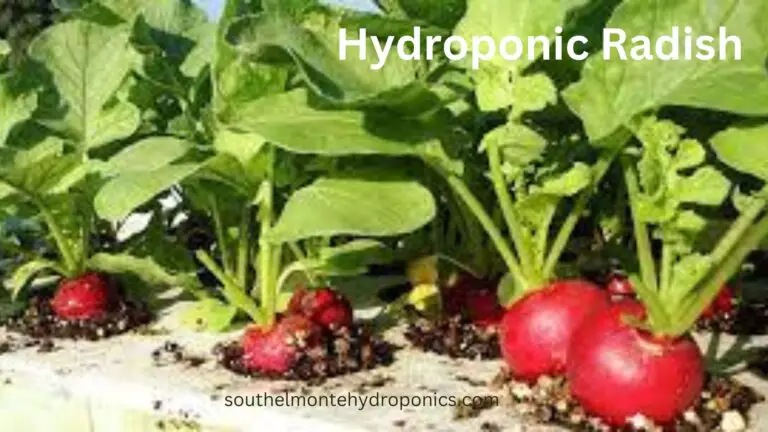How to Go Off-Grid with Hydroponics and Enjoy Sustainable Living
Table of Contents
– Evaluating the environmental factors for off-grid hydroponics
Evaluating the environmental factors for off-grid hydroponics is crucial for the success of your sustainable gardening venture. One of the most important considerations is sunlight. Since you won’t have access to electricity, your crops will rely solely on natural light. Take note of the amount and duration of sunlight in your location, as this will determine the types of plants you can grow and their growth rate. Leafy greens, for example, require less sunlight compared to fruit-bearing crops.
Another environmental factor to evaluate is the temperature. Different plants have different temperature preferences for optimal growth. Some thrive in cool conditions, while others require warmer temperatures. It’s important to assess the average temperature range in your area and choose crops that are compatible with those conditions. Additionally, extreme temperature fluctuations can negatively impact plant health, so it’s worth considering insulation or shading solutions to regulate the temperature within your hydroponic system.
Remember, by analyzing and adapting to the specific environmental factors in your off-grid hydroponic setup, you’ll be well-positioned to create an optimal growing environment for your plants.
• Sunlight is a crucial factor to consider in off-grid hydroponics as crops rely solely on natural light.
• The amount and duration of sunlight in your location will determine the types of plants you can grow and their growth rate.
• Leafy greens require less sunlight compared to fruit-bearing crops.
• Temperature is another important environmental factor to evaluate for optimal plant growth.
• Different plants have different temperature preferences, so it’s important to assess the average temperature range in your area.
• Choose crops that are compatible with the temperature conditions in your location.
• Extreme temperature fluctuations can negatively impact plant health, so consider insulation or shading solutions for regulating the temperature within your hydroponic system.
– Finding the ideal location for sustainable living
When it comes to finding the ideal location for sustainable living, there are several key factors to consider. One of the first aspects to evaluate is the availability of sunlight. Since hydroponics relies on artificial lighting, it is crucial to select a location with ample natural sunlight to supplement the grow lights. This is especially important for plants that require higher light intensity for optimal growth. Additionally, the orientation and positioning of the site should be taken into account to maximize the solar exposure throughout the day.
Another important factor to consider is the accessibility to water sources. With water being an essential component in hydroponics, it is necessary to have easy access to a reliable and sustainable water supply. This includes exploring options for rainwater harvesting or utilizing alternative water sources such as well water or spring water. An adequate water supply can significantly contribute to the success of an off-grid hydroponic system and ensure its sustainability.
• Availability of sunlight is crucial for sustainable living
• Select a location with ample natural sunlight to supplement grow lights
• Consider the orientation and positioning of the site for maximum solar exposure throughout the day
• Accessibility to water sources is important in hydroponics
• Easy access to a reliable and sustainable water supply is necessary
• Explore options for rainwater harvesting or utilizing alternative water sources such as well or spring water
• Adequate water supply contributes to the success and sustainability of an off-grid hydroponic system
– Considering the space requirements for a hydroponic setup
When considering the space requirements for a hydroponic setup, it is important to take into account the specific needs of the plants you wish to cultivate. Different plants require varying amounts of space, both in terms of horizontal and vertical dimensions. For example, plants with larger root systems, such as tomatoes or peppers, will require more space in order to accommodate their extensive root growth. On the other hand, smaller plants like lettuce or herbs can be cultivated in smaller spaces due to their compact size.
In addition to plant size, it is also essential to consider the overall layout and organization of your hydroponic system. A properly designed system maximizes space utilization by optimizing the placement and arrangement of various components. By strategically arranging grow trays or vertical grow towers, you can make efficient use of available space, allowing for higher plant densities. Moreover, considering factors such as lighting, ventilation, and access to water sources will help ensure that your hydroponic setup is functional and effective within the allocated space. Taking these spatial considerations into account will enable you to create an efficient and productive hydroponic system.
• Different plants require varying amounts of space, both horizontally and vertically.
• Plants with larger root systems, such as tomatoes or peppers, will require more space to accommodate their extensive root growth.
• Smaller plants like lettuce or herbs can be cultivated in smaller spaces due to their compact size.
• Proper layout and organization of the hydroponic system maximize space utilization.
• Strategic arrangement of grow trays or vertical grow towers allows for higher plant densities.
• Consider factors such as lighting, ventilation, and access to water sources when designing the system.
• Taking spatial considerations into account enables the creation of an efficient and productive hydroponic system.
Designing Your Off-Grid Hydroponic System
When designing your off-grid hydroponic system, there are several considerations to take into account. Firstly, you need to choose the appropriate hydroponic system that aligns with your specific needs and goals. There are various systems available, including nutrient film technique (NFT), deep water culture (DWC), and vertical tower systems, each with its own advantages and disadvantages.
Secondly, it is essential to understand the components required for a hydroponic system. This includes the growing containers or trays, the irrigation system, a nutrient reservoir, an air pump or oxygenation system, and appropriate lighting. Each component plays a crucial role in ensuring the success of your hydroponic setup. Proper planning and organization of these components will contribute to the efficiency and functionality of your system.
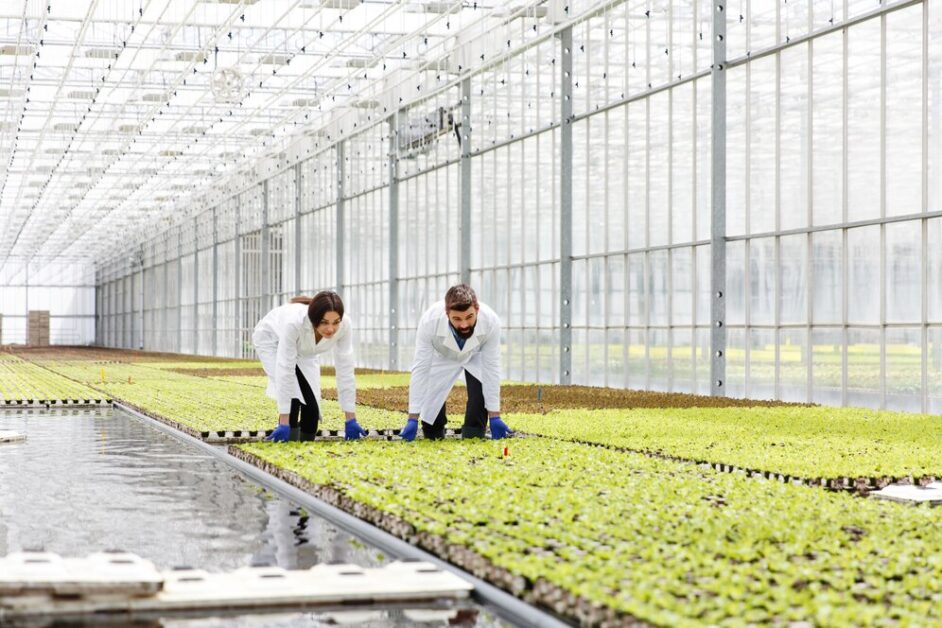
To design your ideal off-grid hydroponic system, take into consideration factors such as available space, resources, and your specific plant selection. By carefully considering these factors and incorporating them into your planning, you can create a sustainable and efficient hydroponic system that meets your needs and allows for successful cultivation of a wide variety of plants. With the right design, you can enjoy fresh and healthy produce, regardless of your location or access to traditional gardening methods.
• Choose the appropriate hydroponic system that aligns with your specific needs and goals:
– Nutrient film technique (NFT)
– Deep water culture (DWC)
– Vertical tower systems
• Understand the components required for a hydroponic system:
– Growing containers or trays
– Irrigation system
– Nutrient reservoir
– Air pump or oxygenation system
– Appropriate lighting
• Proper planning and organization of these components contribute to efficiency and functionality.
• Factors to consider when designing your off-grid hydroponic system:
– Available space
– Resources
– Specific plant selection
• Incorporate these factors into your planning for a sustainable and efficient hydroponic system.
• Enjoy fresh and healthy produce regardless of location or access to traditional gardening methods.
– Choosing the appropriate hydroponic system for your needs
When it comes to choosing the appropriate hydroponic system for your needs, there are several factors to consider. The first is the size and space availability in your desired location. Different hydroponic systems have different footprint requirements, so it is important to assess the space you have available before making a decision. Additionally, you’ll want to evaluate the scalability of the system. If you are planning to expand your hydroponic setup in the future, you may want to choose a system that can easily accommodate growth.
Another important consideration is the type of plants you plan to cultivate. Some hydroponic systems are better suited for specific types of plants, such as leafy greens or vine crops. Understanding the specific needs of your chosen plants will help you determine the optimal system for their growth. Furthermore, you should evaluate the level of automation and maintenance required by each system. If you have limited time or experience, you may prefer a system that requires less manual intervention.
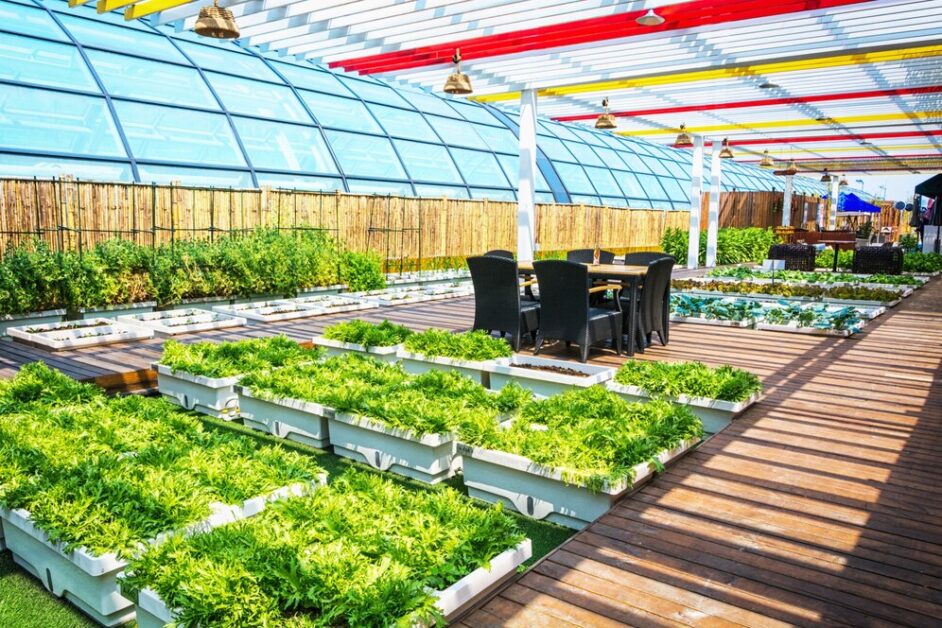
In conclusion, choosing the appropriate hydroponic system requires careful evaluation of factors such as space availability, scalability, plant type, and level of maintenance required. By considering these aspects, you can select a system that best suits your needs and ensures successful hydroponic cultivation.
• Size and space availability in your desired location
• Scalability of the system for future expansion
• Type of plants you plan to cultivate
• Level of automation and maintenance required by each system
– Understanding the components of a hydroponic system
A hydroponic system consists of various components that work together to create the ideal conditions for plant growth without soil. Understanding these components is crucial for designing and maintaining an efficient and successful hydroponic setup.
The first essential component is the reservoir, which holds the nutrient solution that provides the necessary minerals and water to the plants. The reservoir should be made from a durable material such as food-grade plastic and should be able to withstand the constant exposure to the nutrient solution. It should also have a tight-fitting lid to prevent evaporation and contamination.
Another crucial component is the grow tray or channels, where the plants are placed and supported. The grow tray should have a slope for proper drainage and prevent waterlogging. It can be made from materials like plastic or fiberglass, and it should allow enough space for the plants to grow and access the nutrient solution.
The water pump is responsible for circulating the nutrient solution from the reservoir to the plants. It should be reliable and have adjustable flow rates to ensure the plants receive an adequate amount of nutrients and water. A timer can be used to control the pump’s operation and provide regular watering cycles.
In addition to these components, a hydroponic system requires an appropriate growing medium, such as perlite, vermiculite, or rockwool, to support the plants’ roots. Lighting systems with appropriate spectrum and intensity are necessary to mimic natural sunlight and promote photosynthesis. Lastly, a pH meter and nutrient solution testing kit are essential for monitoring and adjusting the nutrient levels to maintain optimal plant health.
Understanding the components of a hydroponic system is essential for those considering this method of gardening. By gaining knowledge about these components and their functions, gardeners can effectively design and maintain their own hydroponic system, fostering the healthy growth of plants and maximizing their yield.
• The reservoir: holds the nutrient solution for the plants and should be made from durable material such as food-grade plastic
• The grow tray or channels: where the plants are placed and supported, should have proper drainage to prevent waterlogging
• The water pump: circulates the nutrient solution from the reservoir to the plants, should be reliable with adjustable flow rates
• Timer: can be used to control watering cycles and ensure regular delivery of nutrients and water
• Growing medium: such as perlite, vermiculite, or rockwool, supports plant roots in absence of soil
• Lighting systems: provide appropriate spectrum and intensity to mimic natural sunlight for photosynthesis
• pH meter and nutrient solution testing kit: essential for monitoring and adjusting nutrient levels for optimal plant health
– Planning the layout and organization of your setup
When planning the layout and organization of your off-grid hydroponic setup, it is crucial to consider factors such as space efficiency, accessibility, and proper utilization of resources. A well-designed layout can optimize your production capacity and facilitate efficient management of your hydroponic system.
One important aspect to consider is the arrangement of your hydroponic units or containers. Ensuring adequate spacing between units allows for easy access to plants for maintenance tasks such as pruning and harvesting. Additionally, leaving enough room for maneuverability will make it easier to monitor the health and growth of your plants without causing damage.
Another factor to consider is the orientation of your setup to maximize sunlight exposure. Placing your hydroponic units near windows or in well-lit areas can help optimize natural light utilization. If sunlight is limited, using supplemental grow lights strategically can provide the necessary light spectrum and intensity required for healthy plant growth.
Furthermore, organizing your hydroponic system in a logical and systematic manner can enhance workflow and simplify management tasks. Grouping plants with similar requirements, such as nutrient levels or water consumption, can streamline maintenance and ensure optimal care for different types of crops.
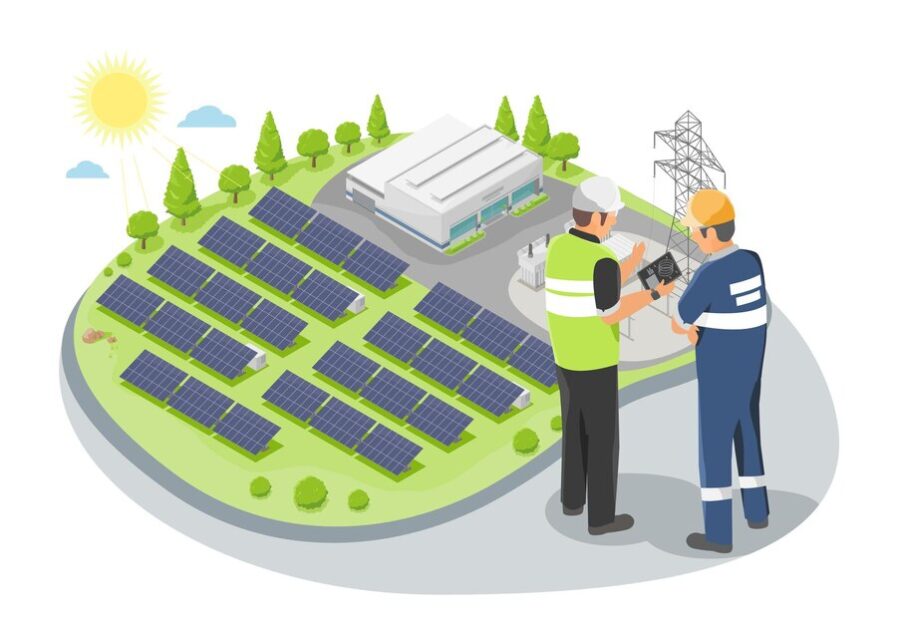
By carefully planning the layout and organization of your off-grid hydroponic setup, you can create an efficient and productive system that maximizes space, resources, and the overall potential for successful cultivation.
• Adequate spacing between hydroponic units for easy access and maintenance tasks
• Sufficient room for maneuverability to monitor plant health without causing damage
• Maximizing sunlight exposure by placing units near windows or in well-lit areas
• Using supplemental grow lights strategically if sunlight is limited
• Organizing system in a logical and systematic manner to enhance workflow
• Grouping plants with similar requirements for streamlined maintenance
• Creating an efficient and productive system that maximizes space and resources
Selecting the Right Plants for Hydroponic Cultivation
When it comes to hydroponic cultivation, selecting the right plants is crucial for success. Not all plants thrive in hydroponic environments, so it’s important to choose ones that are well-suited for this growing method. In general, leafy greens, such as lettuce, spinach, and kale, are excellent choices for hydroponics. These types of plants have shallow root systems and can absorb nutrients efficiently from the nutrient solution.
Herbs like basil, parsley, and mint also do well in hydroponic systems. They not only provide a fresh supply of aromatic herbs but also grow quickly and require minimal space. Additionally, certain vine crops like tomatoes and cucumbers can be successfully cultivated in hydroponic setups, although they may require larger and more advanced systems.
When selecting plants for hydroponics, it’s important to consider their nutritional requirements. Different plants have varying nutrient needs, so it’s necessary to provide them with the appropriate balance of macronutrients and micronutrients. For example, leafy greens generally require high nitrogen levels, while fruiting plants may benefit from a higher potassium concentration.
Overall, choosing the right plants for hydroponic cultivation is a critical step in ensuring a successful and productive system. By selecting plants that are well-suited for hydroponics and meeting their specific nutritional needs, gardeners can enjoy the benefits of high-yield, year-round cultivation regardless of their location.
• Leafy greens, such as lettuce, spinach, and kale, are excellent choices for hydroponics due to their shallow root systems and efficient nutrient absorption.
• Herbs like basil, parsley, and mint thrive in hydroponic systems and provide a fresh supply of aromatic herbs with minimal space requirements.
• Certain vine crops like tomatoes and cucumbers can be successfully cultivated in hydroponic setups but may require larger and more advanced systems.
• Consider the nutritional requirements of plants when selecting them for hydroponics. Different plants have varying nutrient needs that should be met for optimal growth.
• Leafy greens generally require high nitrogen levels while fruiting plants may benefit from a higher potassium concentration.
• Selecting the right plants is crucial for ensuring a successful and productive hydroponic system that yields high-quality produce year-round.
– Identifying plants that thrive in hydroponic environments
Hydroponic systems offer a versatile and efficient way to grow a wide variety of plants, making it essential to identify those that thrive in this unique environment. While almost any plant can be grown hydroponically, some are particularly well-suited to this cultivation method. Leafy greens such as lettuce, spinach, and kale are popular choices due to their fast growth rates and high yields. These plants can be grown using a simple nutrient film technique (NFT) system, which continuously circulates a thin film of nutrient-rich water over the roots.
Herbs like basil, mint, and parsley are also excellent choices for hydroponic cultivation. They prefer well-drained conditions and can thrive in various hydroponic systems. Additionally, their compact growth habits make them suitable for smaller setups. For larger-scale hydroponic gardens, vine crops like tomatoes, cucumbers, and peppers can be grown using trellises or vertical systems to support their sprawling growth. These plants require larger nutrient reservoirs and ample space for proper root development.
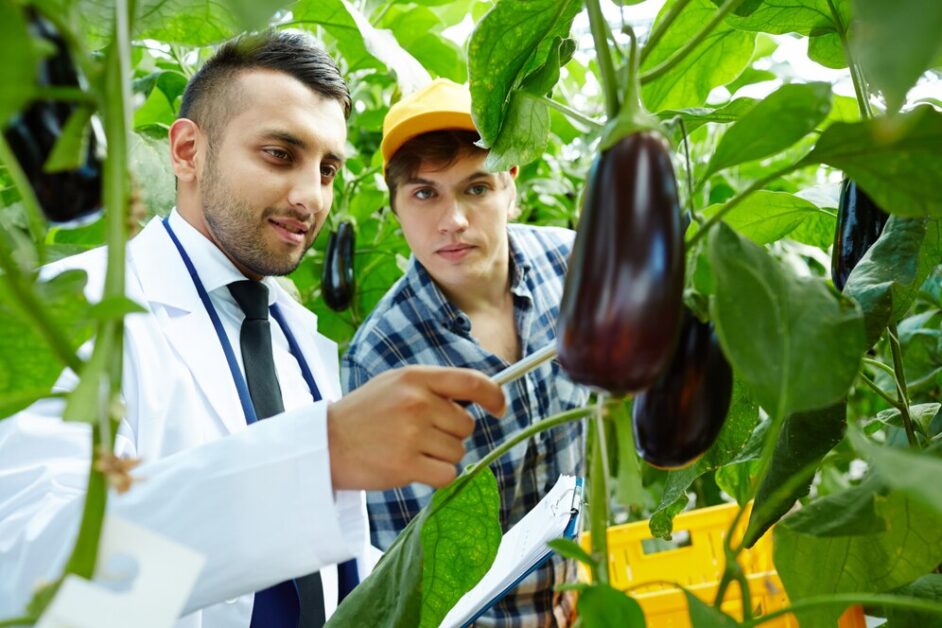
It’s worth noting that different plants have specific nutritional requirements, so it’s crucial to provide them with the appropriate nutrient solutions. Conducting thorough research and consulting reliable sources will ensure that you select plants that are compatible with the hydroponic environment and can thrive to their fullest potential. By identifying and choosing the right plants for your hydroponic setup, you can create a flourishing and abundant garden.
• Leafy greens such as lettuce, spinach, and kale are well-suited for hydroponic cultivation due to their fast growth rates and high yields.
• Herbs like basil, mint, and parsley thrive in hydroponic systems and prefer well-drained conditions.
• Vine crops like tomatoes, cucumbers, and peppers can be grown in larger-scale hydroponic gardens using trellises or vertical systems for support.
• Different plants have specific nutritional requirements, so it’s crucial to provide them with the appropriate nutrient solutions.
• Conduct thorough research and consult reliable sources to ensure you select plants that are compatible with the hydroponic environment.
– Exploring various herbs, vegetables, and fruits for hydroponic cultivation
Hydroponic cultivation offers a wide range of possibilities when it comes to the types of herbs, vegetables, and fruits that can be grown. Whether you have a preference for fresh herbs to enhance your culinary creations, an urge to grow your own vibrant vegetables, or a craving for juicy, flavorful fruits, hydroponics can cater to your desires.
When it comes to herbs, popular choices for hydroponic cultivation include basil, mint, parsley, and cilantro. These herbs thrive in a hydroponic environment, with their aromatic flavors and fresh scents intensifying as they grow. Not only do they add incredible taste to dishes, but they also provide a touch of greenery to your indoor garden.
Vegetables are another fantastic option for hydroponic cultivation. Leafy greens such as lettuce, spinach, and kale are particularly well-suited for hydroponics. They grow rapidly and can be harvested continuously, providing a constant supply of fresh and nutritious greens for your meals. Other vegetables like tomatoes, cucumbers, peppers, and beans can also be successfully grown hydroponically, allowing you to enjoy the taste of homegrown produce all year round.
When it comes to fruits, strawberries are a popular choice for hydroponic cultivation. Their compact size and relatively low nutrient requirements make them ideal candidates for indoor gardening. Additionally, you can experiment with other fruits like melons, berries, and even dwarf citrus trees, as their growth can be controlled and optimized in a hydroponic system.
The possibilities are truly endless when it comes to the selection of herbs, vegetables, and fruits for hydroponic cultivation. With a well-designed hydroponic system, you can enjoy an abundance of fresh, flavorful produce right at your fingertips. So, why not embark on this nutrient-rich journey and explore the wide array of options available for hydroponic gardening?
• Basil, mint, parsley, and cilantro are popular choices for hydroponic cultivation
• These herbs thrive in a hydroponic environment and intensify in flavor as they grow
• Leafy greens like lettuce, spinach, and kale are well-suited for hydroponics
• They grow rapidly and can be continuously harvested for fresh and nutritious greens
• Other vegetables such as tomatoes, cucumbers, peppers, and beans can also be grown hydroponically
• Strawberries are a popular choice for hydroponic fruit cultivation due to their compact size and low nutrient requirements
• Experimentation with other fruits like melons, berries, and dwarf citrus trees is possible in a hydroponic system
– The possibilities of herb selection include basil,mint,parsley,and cilantro. These herbs not only add incredible taste to dishes but also provide freshness.
– Vegetables like lettuce ,spinach,kale,tomatoes,cucumbers ,peppers,and beans can be successfully grown through the use of Hydrophonics.
– Fruits such as strawberries,melons ,berries,dwarf citrus trees etc.can also be cultivated using Hydrophonics.
– Considering the nutritional requirements of different plants
Different plants have varying nutritional requirements, and understanding these requirements is crucial for successful hydroponic cultivation. Each plant has specific needs for essential nutrients, such as nitrogen, phosphorus, potassium, calcium, and magnesium, among others. These nutrients play vital roles in various plant functions, including growth, root development, photosynthesis, and fruit production.
For example, leafy greens like lettuce and spinach require high levels of nitrogen for vigorous leaf growth. On the other hand, fruiting plants like tomatoes and peppers have higher potassium requirements to support the development of healthy fruits. Understanding these specific nutrient requirements allows hydroponic gardeners to tailor their nutrient solutions accordingly, ensuring optimal plant health and productivity.
In addition to macronutrients, plants also benefit from a range of micronutrients, such as iron, manganese, zinc, and copper, among others. These trace elements are essential for various enzymatic reactions and play crucial roles in the overall health and vitality of plants. Hydroponic gardeners should ensure that their nutrient solutions provide a balanced combination of both macronutrients and micronutrients to meet the specific needs of each plant species.
By considering the nutritional requirements of different plants, hydroponic gardeners can provide the right blend of nutrients, resulting in healthy, thriving plants. This knowledge allows for targeted nutrient supplementation and adjustment, leading to improved yields and overall plant performance in the hydroponic system.
• Different plants have varying nutritional requirements, including essential nutrients such as nitrogen, phosphorus, potassium, calcium, and magnesium.
• Leafy greens like lettuce and spinach require high levels of nitrogen for vigorous leaf growth.
• Fruiting plants like tomatoes and peppers have higher potassium requirements to support the development of healthy fruits.
• Understanding specific nutrient requirements allows hydroponic gardeners to tailor their nutrient solutions accordingly for optimal plant health and productivity.
• Plants also benefit from a range of micronutrients such as iron, manganese, zinc, and copper which are essential for enzymatic reactions and overall plant vitality.
• Hydroponic gardeners should ensure that their nutrient solutions provide a balanced combination of both macronutrients and micronutrients to meet the specific needs of each plant species.
• By considering the nutritional requirements of different plants, hydroponic gardeners can provide targeted nutrient supplementation leading to improved yields and overall plant performance in the hydroponic system.
Water Management for Sustainable Hydroponics
Water management is a crucial aspect of any sustainable hydroponic system. As water is the primary medium for delivering nutrients to plants in this soilless cultivation method, it is essential to ensure its efficient use to maintain a healthy and productive growing environment. Implementing strategies for water conservation not only helps minimize waste but also contributes to the overall sustainability of your off-grid hydroponic setup.
One key consideration in water management is understanding the importance of water in hydroponic systems. Unlike traditional soil-based gardening, where plants extract water and nutrients from the surrounding soil, hydroponics relies on a nutrient-rich solution to provide plants with essential elements. This means that water plays a dual role as both the carrier of nutrients and the medium in which plants grow. Therefore, it is crucial to monitor and maintain the proper water pH and nutrient levels to support optimal plant growth and development.
Additionally, exploring alternative water sources for off-grid living can further enhance the sustainability of your hydroponic system. Rainwater harvesting, for example, can be an excellent option to supplement your water supply, especially in areas where water scarcity is a concern. By collecting rainwater and using it in your hydroponic system, you can reduce your reliance on traditional water sources and minimize your environmental footprint. However, it is important to ensure the quality and cleanliness of collected rainwater through appropriate filtration and treatment methods to prevent any potential contamination that may harm your plants.
With effective water management practices, you can create a sustainable hydroponic system that conserves water resources while ensuring optimal plant growth. By understanding the crucial role of water in hydroponics, exploring alternative water sources, and implementing water conservation strategies, you can contribute to a greener and more efficient off-grid hydroponic setup.
• Implementing strategies for water conservation helps minimize waste and contributes to overall sustainability
• Water in hydroponic systems serves as both the carrier of nutrients and the medium in which plants grow
• Monitoring and maintaining proper water pH and nutrient levels support optimal plant growth
• Exploring alternative water sources, such as rainwater harvesting, can supplement water supply and reduce reliance on traditional sources
• Proper filtration and treatment methods are necessary to ensure the quality and cleanliness of collected rainwater
• Effective water management practices create a sustainable hydroponic system that conserves resources while ensuring optimal plant growth
Here is a table that can be used to evaluate the water management for sustainable hydroponics:
| Water Management Factor | Description |
|---|---|
| Water Conservation | Hydroponics uses 97% less water than traditional agriculture, and water is recirculated throughout the system |
| Nutrient Solution | Nutrient solutions are specifically designed for each crop’s needs, and mineral-based fertilizers can be used to avoid toxic chemical inputs |
| Water Quality | The water used in hydroponic systems should be free from contaminants and have a pH level between 5.5 and 6.5. |
| Climate-Smart Water Technologies | Climate-smart water technologies such as water harvesting, micro-irrigation, and resource conservation farming can be adopted to increase water-use efficiency in agriculture and other critical services to humans and animals |
– Understanding the importance of water in hydroponic systems
Water is a crucial element in any hydroponic system, playing a vital role in the growth and development of plants. Unlike traditional soil-based gardening, hydroponics relies on water as the primary medium for delivering nutrients directly to the plant roots. This water-based system allows for greater control and efficiency in nutrient absorption, resulting in faster growth rates and higher yields.
One of the key benefits of using water in hydroponics is its ability to efficiently transfer nutrients to the plants. In a soil-based system, plants must expend energy in search of nutrients, often competing with other plants for limited resources. In contrast, hydroponics provides a nutrient-rich solution that is readily available to the roots, eliminating the need for the plant to devote energy to extensive root growth. This streamlined process allows plants to focus their energy on other essential functions, such as flowering and fruit production.
Moreover, water in a hydroponic system also serves as a medium for the transportation of oxygen. Adequate oxygen supply is crucial for healthy plant growth, as it is needed for respiration and nutrient uptake. In a hydroponic setup, oxygen is dissolved in the water, ensuring that the roots have constant access to this vital element. This oxygenation not only promotes robust root development but also prevents the suffocation of roots that can occur in soil-based systems with inadequate drainage or compaction.
In conclusion, water is an indispensable element in hydroponic systems, providing plants with both essential nutrients and oxygen. Its efficient delivery system allows for optimized nutrient absorption and enhanced growth rates. By harnessing the power of water, hydroponic gardeners can achieve substantial benefits in terms of plant health, yield, and resource efficiency.
• Water is the primary medium for delivering nutrients directly to plant roots in hydroponic systems.
• Hydroponics eliminates the need for plants to search for nutrients, as they are readily available in the water solution.
• This allows plants to focus their energy on other essential functions such as flowering and fruit production.
• Water also serves as a medium for oxygen transportation in hydroponic systems.
• Adequate oxygen supply is crucial for healthy plant growth and nutrient uptake.
• Oxygen dissolved in water ensures constant access to this vital element for the roots.
• This promotes robust root development and prevents suffocation of roots that can occur in soil-based systems with inadequate drainage or compaction.
– Implementing strategies for water conservation
To ensure sustainable off-grid hydroponics, it is essential to implement effective strategies for water conservation. Water is a precious resource, and in a hydroponic system, it plays a crucial role in nourishing the plants. By adopting practical measures to conserve water, you not only minimize waste but also reduce the environmental impact of your hydroponic setup.
One strategy for water conservation in hydroponics is the use of a recirculating system. In this system, the nutrient solution is constantly reused, limiting the amount of water needed for your plants. By monitoring and adjusting the pH and nutrient levels regularly, you can maintain optimal plant growth while minimizing water usage. Additionally, incorporating a filtration system within the recirculating system can help remove any impurities or contaminants, ensuring the nutrient solution remains clean and suitable for your plants.
Another effective approach is implementing a drip irrigation system. This method delivers water directly to the roots of the plants, reducing evaporation and minimizing water loss. By using timers and sensors, you can regulate the frequency and duration of irrigation sessions, ensuring your plants receive sufficient moisture without excessive wastage. Additionally, placing moisture sensors in the growing medium can provide real-time data on the moisture levels, helping you fine-tune your irrigation schedule and prevent overwatering.
By implementing these water conservation strategies in your off-grid hydroponic system, you can maximize the efficiency of your water usage while maintaining optimal plant growth. Not only will this help minimize your environmental impact but it will also contribute to the overall sustainability of your gardening practices.
• Use a recirculating system to limit the amount of water needed for plants
• Monitor and adjust pH and nutrient levels regularly to maintain optimal plant growth while minimizing water usage
• Incorporate a filtration system within the recirculating system to remove impurities and contaminants from the nutrient solution
• Implement a drip irrigation system to deliver water directly to plant roots, reducing evaporation and water loss
• Use timers and sensors to regulate irrigation frequency and duration, ensuring plants receive sufficient moisture without wastage
• Place moisture sensors in growing medium for real-time data on moisture levels, preventing overwatering
By implementing these strategies, you can maximize efficiency of your off-grid hydroponic system’s water usage while maintaining optimal plant growth. This not only minimizes environmental impact but also contributes to overall sustainability of gardening practices.
Here is a table that can be used to evaluate the strategies for water conservation:
| Water Conservation Strategy | Description |
|---|---|
| Install water-efficient fixtures | Installing water-efficient fixtures such as low-flow showerheads, faucets, and toilets can help reduce water usage. |
| Fix leaks | Fixing leaks in pipes, faucets, and toilets can help save water. |
| Harvest rainwater | Harvesting rainwater can help reduce the demand for freshwater and provide an alternative source of water for irrigation and other non-potable uses. |
| Use drought-resistant plants | Using drought-resistant plants in landscaping can help reduce the need for watering and save water. |
| Reuse greywater | Greywater from sinks, showers, and washing machines can be reused for irrigation and other non-potable uses. |
| Reduce lawn area | Reducing the area of lawn can help save water by reducing the need for watering. |
| Use mulch | Using mulch around plants can help retain moisture in the soil and reduce the need for watering. |
| Use a broom | Using a broom instead of a hose to clean driveways and sidewalks can help save water. |
– Exploring alternative water sources for off-grid living
Water is a crucial component in any hydroponic system, and finding alternative water sources for off-grid living can be a key factor in achieving self-sustainability. When exploring alternative water sources, one option to consider is rainwater harvesting. By collecting rainwater using a well-designed system of gutters, storage tanks, and filters, you can provide your hydroponic setup with a renewable and natural source of water. Not only is rainwater free of many contaminants found in tap water, but it also contains beneficial nutrients that can supplement your nutrient solution. However, it’s essential to test the quality of rainwater regularly and ensure proper filtration to prevent any potential issues.
Another option for off-grid water sources is well water. If you have access to a reliable groundwater source, such as a well, you can tap into it to meet your hydroponic watering needs. Well water is typically free from chemicals and additives found in municipal water supplies, which can be beneficial for the overall health of your plants. However, it’s vital to regularly test the quality of well water and monitor its nutrient content. Depending on the specific characteristics of your well water, you may need to adjust your nutrient solution to provide the optimal balance of essential elements for plant growth.
• Rainwater harvesting is an effective alternative water source for off-grid living.
• A well-designed system of gutters, storage tanks, and filters can collect and store rainwater.
• Rainwater is free of many contaminants found in tap water and contains beneficial nutrients.
• Regular testing of rainwater quality and proper filtration are essential to prevent issues.
• Well water is another option for off-grid water sources.
• Well water is typically free from chemicals and additives found in municipal water supplies.
• Regular testing of well water quality and monitoring nutrient content is necessary.
• Adjusting the nutrient solution may be required based on the specific characteristics of well water.
Nutrient Solutions and Fertilization Techniques
Nutrient Solutions
In hydroponic systems, nutrient solutions play a vital role in providing plants with the necessary minerals and elements for healthy growth. These solutions, consisting of a mix of essential nutrients, are directly supplied to the plants’ roots, eliminating the need for soil. The composition of a nutrient solution can vary depending on the specific needs of the plants being cultivated.
To develop a balanced nutrient solution, it is essential to understand the nutritional requirements of different plant species. For instance, leafy greens such as lettuce and spinach require higher levels of nitrogen, while fruiting plants like tomatoes and peppers benefit from a higher phosphorus and potassium content. By selecting the appropriate ratios of nitrogen, phosphorus, and potassium (NPK), as well as other essential micronutrients like calcium, magnesium, and iron, gardeners can ensure optimal plant health and productivity.
Fertilization Techniques
Proper fertilization techniques are crucial in hydroponics to ensure that plants receive the necessary nutrients in a readily available form. Unlike traditional soil-based cultivation, where nutrients are gradually released over time, hydroponics requires a more controlled and precise approach.
Common fertilization techniques in hydroponics include continuous liquid feeding and periodic dosage. Continuous liquid feeding involves supplying a diluted nutrient solution to plants on a constant basis, allowing for a constant supply of nutrients. On the other hand, periodic dosage involves supplying concentrated nutrient solutions at specific intervals, typically based on the growth stage of the plants.
In addition to the delivery method, other factors should be considered, such as the pH and temperature of the nutrient solution. Maintaining the proper pH range ensures that the nutrients are readily available to the plants, while temperature control can influence nutrient uptake. Monitoring and fine-tuning these factors are essential for maximizing nutrient absorption and avoiding imbalances that could lead to deficiencies or toxicities.
In the next sections, we will delve deeper into the specific components of a hydroponic system and explore the planning and design aspects. Stay tuned to discover how to create an efficient and vibrant hydroponic setup for your off-grid living.
• Nutrient solutions are essential in hydroponic systems for providing plants with necessary minerals and elements
• These solutions eliminate the need for soil and are directly supplied to the roots of plants
• The composition of a nutrient solution varies depending on the specific needs of different plant species
• Leafy greens like lettuce and spinach require higher levels of nitrogen, while fruiting plants benefit from higher phosphorus and potassium content
• To develop a balanced nutrient solution, understanding the nutritional requirements of different plant species is crucial
• Selecting appropriate ratios of nitrogen, phosphorus, and potassium (NPK) as well as other micronutrients ensures optimal plant health
Fertilization Techniques:
• Proper fertilization techniques are crucial in hydroponics to ensure readily available nutrients for plants
• Hydroponics requires a more controlled and precise approach compared to traditional soil-based cultivation
Common fertilization techniques in hydroponics include:
1. Continuous liquid feeding: Supplying diluted nutrient solutions constantly for a continuous supply of nutrients.
2. Periodic dosage: Supplying concentrated nutrient solutions at specific intervals based on the growth stage of plants.
Other factors to consider:
– pH level: Maintaining proper pH range ensures nutrients are readily available to plants.
– Temperature control: Influences nutrient uptake; monitoring temperature is important.
In upcoming sections, we will explore specific components of a hydroponic system and discuss planning and design aspects. Stay tuned to learn how you can create an efficient and vibrant hydroponic setup for your off-grid living.
– Developing a balanced nutrient solution for hydro
Developing a balanced nutrient solution for hydroponics is crucial to ensure optimal plant growth and productivity. Nutrient solutions provide essential elements that plants need to thrive, such as nitrogen, phosphorus, potassium, calcium, and magnesium. It is essential to understand the specific nutrient requirements of different plants and adjust the nutrient solution accordingly.
To develop a balanced nutrient solution, it is important to conduct regular water and soil testing to determine the existing nutrient levels. This information will help you identify any deficiencies or excesses in the nutrient solution and make necessary adjustments. The pH level of the nutrient solution is also important, as it affects nutrient availability to the plants. Most hydroponic systems require a slightly acidic pH level between 5.5 and 6.5 for optimal nutrient absorption.
When formulating the nutrient solution, it is recommended to use high-quality commercial hydroponic fertilizers or create a custom blend using individual nutrient salts. These salts should be water-soluble and suitable for hydroponic use. The concentrations of each nutrient should be carefully measured and mixed according to the specific requirements of the plants being cultivated. It is important to follow the recommended dosages provided by the fertilizer manufacturer or consult with a hydroponics expert to avoid nutrient imbalances that can harm plant health. Additionally, it is advisable to monitor the nutrient solution regularly, adjusting it as needed based on the growth stage of the plants and any nutrient deficiencies observed.
A nutrient solution schedule can be developed to guide the application of the solution to the hydroponic system. This schedule should consider the growth stage of the plants, with different nutrient ratios being used during the vegetative and flowering stages. By providing the right balance of nutrients at each stage, you can promote healthy plant growth, increase yields, and reduce the risk of nutrient-related disorders.
In conclusion, developing a balanced nutrient solution for hydroponics requires careful consideration of plant nutrient requirements, regular monitoring and testing of water and soil, and appropriate adjustments to pH and nutrient concentrations. By maintaining a well-balanced nutrient solution throughout the growth cycle, you can optimize plant health and maximize the productivity of your hydroponic system.
• Conduct regular water and soil testing to determine existing nutrient levels
• Identify deficiencies or excesses in the nutrient solution and make necessary adjustments
• Maintain a slightly acidic pH level between 5.5 and 6.5 for optimal nutrient absorption
• Use high-quality commercial hydroponic fertilizers or create a custom blend using individual nutrient salts
• Measure and mix concentrations of each nutrient according to specific plant requirements
• Follow recommended dosages provided by fertilizer manufacturer or consult with a hydroponics expert
• Monitor the nutrient solution regularly, adjusting as needed based on plant growth stage and deficiencies observed
• Develop a nutrient solution schedule that considers different ratios during vegetative and flowering stages
• Promote healthy plant growth, increase yields, and reduce risk of nutrient-related disorders through balanced nutrients
For more clarity watch the above video
What are the essential components of a balanced nutrient solution for hydroponics?
A balanced nutrient solution for hydroponics should contain the major macronutrients (nitrogen, phosphorus, and potassium) as well as secondary macronutrients (calcium, magnesium, and sulfur) and micronutrients (iron, zinc, copper, etc.).
How can I evaluate the environmental factors for off-grid hydroponics?
When evaluating environmental factors for off-grid hydroponics, consider factors such as temperature, humidity, light intensity, and CO2 levels. These factors can have a significant impact on the success of your hydroponic system.
How do I find the ideal location for sustainable living with hydroponics?
Look for a location that receives ample sunlight, has access to water sources, and is protected from harsh weather conditions. Additionally, consider the availability of space and the local climate when choosing the ideal location for your off-grid hydroponics setup.
What are the space requirements for a hydroponic system?
The space requirements for a hydroponic system vary depending on the type and scale of the setup. However, generally, you will need enough space for the hydroponic containers or beds, a reservoir for nutrient solution, and appropriate lighting and ventilation systems.
How do I choose the appropriate hydroponic system for my needs?
When choosing a hydroponic system, consider factors such as available space, desired plant species, level of automation, and your own experience and expertise. Some common hydroponic systems include Deep Water Culture, Nutrient Film Technique, and Ebb and Flow.
Which plants thrive in hydroponic environments?
Many plants thrive in hydroponic environments, including lettuce, tomatoes, peppers, herbs (such as basil and mint), strawberries, and leafy greens like spinach and kale. These plants have adapted well to soilless cultivation and can produce high yields in hydroponic systems.
What are the water management strategies for sustainable hydroponics?
Implement water management strategies such as recirculating the nutrient solution, using water-saving techniques like drip irrigation, and monitoring and adjusting pH and nutrient levels regularly. These strategies help conserve water and maintain optimal growing conditions in a sustainable hydroponic system.
How can I explore alternative water sources for off-grid hydroponics?
Consider collecting rainwater, using greywater from household activities, or utilizing a well or borehole as alternative water sources for your off-grid hydroponic system. However, it is essential to ensure the water quality is suitable for hydroponic cultivation.
What are some fertilization techniques for hydroponics?
Common fertilization techniques for hydroponics include the use of liquid nutrient solutions, controlled-release fertilizers, or organic amendments. Each technique has its own advantages and considerations, and the choice depends on the specific requirements of your hydroponic setup.

Nicole Burke is a dynamic writer at SouthElMonteHydroponics, fueled by her passion for horticulture and environmental sustainability. Armed with a degree in Environmental Science from a renowned institution, Nicole’s expertise lies in hydroponic gardening, organic farming, and biodiversity conservation. Her insatiable curiosity and love for nature drive her to explore innovative techniques in hydroponics, seeking to revolutionize the way we grow crops in urban environments. Nicole’s writing reflects her deep commitment to promoting eco-conscious practices and fostering a deeper connection between humans and the natural world. Through her engaging storytelling, she inspires others to embrace sustainable living and harness the power of hydroponics for a greener future.

